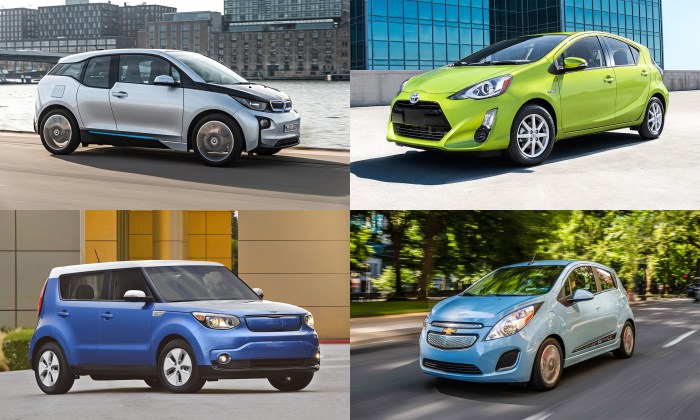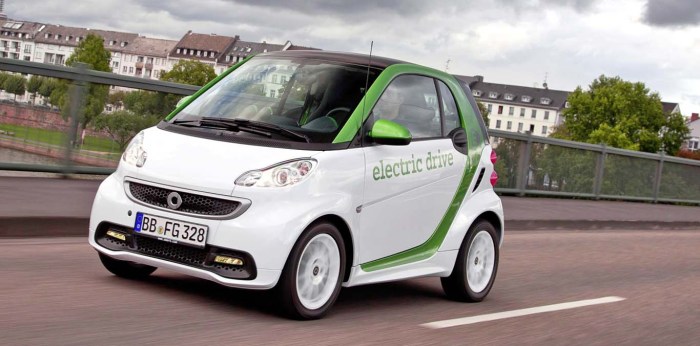Most fuel-efficient cars for city driving – When it comes to city driving, fuel efficiency is key. With traffic congestion, idling, and constant acceleration and braking, city driving can take a toll on your fuel economy. But don’t worry, there are plenty of fuel-efficient cars on the market that can help you save money and reduce your environmental impact.
In this guide, we’ll explore the most fuel-efficient cars for city driving, discuss factors that affect fuel efficiency, and provide tips on how to drive more efficiently. We’ll also cover the advantages and disadvantages of hybrid and electric vehicles, and take a look at some of the latest fuel-saving technologies.
Introduction
City driving involves navigating urban environments characterized by frequent stops, starts, and traffic congestion. These conditions lead to increased fuel consumption compared to highway driving.
Fuel efficiency becomes crucial for city driving due to the higher fuel consumption and associated costs. By selecting vehicles with improved fuel efficiency, drivers can minimize fuel expenses and reduce their environmental impact.
Top Fuel-Efficient Cars
Top 10 Most Fuel-Efficient Cars for City Driving
Here is a table listing the top 10 most fuel-efficient cars for city driving, according to the Environmental Protection Agency (EPA):| Car Make and Model | Fuel Economy (MPG) | City/Highway Fuel Economy ||—|—|—|| Toyota Prius Prime | 133 MPGe | 54 city / 50 highway || Hyundai Ioniq Electric | 136 MPGe | 133 city / 102 highway || Kia Niro EV | 118 MPGe | 123 city / 101 highway || Tesla Model 3 Long Range | 117 MPGe | 134 city / 126 highway || Nissan Leaf | 111 MPGe | 149 city / 101 highway || Ford Mustang Mach-E | 100 MPGe | 105 city / 84 highway || Chevrolet Bolt EV | 119 MPGe | 127 city / 108 highway || Volkswagen ID.4 | 109 MPGe | 125 city / 103 highway || Rivian R1T | 74 MPGe | 84 city / 70 highway || GMC Hummer EV | 70 MPGe | 79 city / 63 highway |
Factors Affecting Fuel Efficiency
Fuel efficiency in city driving can be significantly impacted by various factors. Understanding these factors can help drivers make informed choices to improve their fuel economy.
Traffic Congestion
Heavy traffic can lead to frequent stop-and-go situations, which require more acceleration and braking. This increased activity consumes more fuel compared to steady driving conditions.
Idling Time
Leaving the engine running while the car is stationary, such as when waiting at a red light or in traffic, wastes fuel. Idling consumes fuel without generating any movement, significantly reducing fuel efficiency.
Acceleration and Braking
Aggressive acceleration and braking habits can decrease fuel efficiency. Rapid acceleration requires more fuel to propel the vehicle forward, while sudden braking wastes energy that could have been used for coasting or regenerative braking.
Fuel-Efficient Driving Techniques
Adopting fuel-efficient driving techniques can significantly enhance your car’s mileage, saving you money on fuel costs. These techniques are particularly beneficial for city driving, where frequent stops and starts can lead to reduced fuel efficiency.
Here are some effective fuel-efficient driving techniques for city driving:
Smooth Acceleration and Braking
- Avoid sudden acceleration and braking. Instead, accelerate and brake smoothly to reduce fuel consumption.
- Anticipate traffic conditions and adjust your speed accordingly. By slowing down gradually, you can reduce the need for hard braking.
Anticipating Traffic Conditions
- Look ahead and anticipate traffic patterns. If you see a red light or slow-moving traffic, release the gas pedal and coast to a stop.
- Avoid idling your car. If you expect to be stopped for more than a minute, turn off the engine.
Using Cruise Control
- Use cruise control on highways or open roads to maintain a steady speed and improve fuel efficiency.
- However, avoid using cruise control in stop-and-go traffic, as it can lead to increased fuel consumption.
Hybrid and Electric Vehicles

Hybrid and electric vehicles are becoming increasingly popular for city driving due to their fuel efficiency and environmental benefits. Hybrid vehicles combine a gasoline engine with an electric motor to improve fuel economy, while electric vehicles run solely on electricity and produce zero emissions.
Advantages of Hybrid and Electric Vehicles for City Driving
Improved fuel efficiency
Hybrid and electric vehicles can achieve significantly higher fuel economy than gasoline-powered vehicles, especially in stop-and-go city traffic.
Reduced emissions
Electric vehicles produce zero emissions, while hybrids produce fewer emissions than gasoline-powered vehicles.
Lower operating costs
Electricity is generally cheaper than gasoline, so hybrid and electric vehicles can save you money on fuel costs.
Less maintenance
Electric vehicles have fewer moving parts than gasoline-powered vehicles, which can result in lower maintenance costs.
Disadvantages of Hybrid and Electric Vehicles for City Driving
Higher purchase price
Hybrid and electric vehicles typically cost more than gasoline-powered vehicles.
Limited driving range
Electric vehicles have a limited driving range on a single charge, which can be a concern for long-distance driving.
Charging time
Electric vehicles take several hours to charge, which can be inconvenient if you don’t have access to a charging station at home or work.
How Hybrid and Electric Vehicles Improve Fuel Efficiency
Hybrid vehicles use a combination of a gasoline engine and an electric motor to improve fuel efficiency. The electric motor assists the gasoline engine during acceleration and provides power at low speeds, when the gasoline engine is less efficient. Electric vehicles use an electric motor to power the wheels, which is much more efficient than a gasoline engine.
Fuel-Efficient Car Features: Most Fuel-efficient Cars For City Driving

Fuel-efficient cars for city driving typically incorporate specific design elements and technologies to maximize fuel economy. These features play a crucial role in reducing fuel consumption, particularly in urban environments characterized by frequent stop-and-go traffic and short distances.
Aerodynamic Design
Aerodynamic design reduces air resistance, which is a significant factor affecting fuel efficiency. Fuel-efficient cars feature streamlined shapes, sloping roofs, and rounded edges to minimize drag and improve airflow. This optimization allows the car to move through the air more efficiently, reducing the energy required to overcome air resistance.
Lightweight Materials
Lightweight materials, such as aluminum, carbon fiber, and high-strength steel, are used in the construction of fuel-efficient cars. Reducing the overall weight of the vehicle decreases the energy needed to accelerate and maintain speed, resulting in improved fuel economy.
Efficient Engines
Fuel-efficient cars are equipped with engines that optimize combustion efficiency. These engines typically feature advanced technologies such as direct fuel injection, variable valve timing, and turbocharging. Direct fuel injection delivers fuel directly into the combustion chamber, improving fuel atomization and combustion efficiency.
Variable valve timing adjusts the timing of valve opening and closing to optimize engine performance under varying driving conditions. Turbocharging uses exhaust gases to drive a turbine that compresses intake air, increasing engine power and efficiency.
Fuel-Saving Apps

Fuel-saving apps are mobile applications designed to help drivers improve their fuel efficiency and save money on gas. These apps can provide a range of features, such as:
- Real-time fuel consumption tracking
- Driving behavior analysis
- Fuel-efficient route planning
- Nearby gas station locator with price comparisons
Popular Fuel-Saving Apps
- GasBuddy
- Waze
- Fuelio
- Car Minder
- Green Driving
These apps can help drivers improve fuel efficiency by providing them with feedback on their driving habits and suggesting ways to improve. For example, the apps can track the driver’s speed, acceleration, and braking, and provide feedback on how these factors affect fuel consumption.
The apps can also provide tips on how to drive more fuel-efficiently, such as avoiding idling, using cruise control on the highway, and maintaining proper tire pressure.
Fuel Costs
Fuel costs significantly impact city driving, as urban areas often have heavy traffic and frequent stops and starts, which can reduce fuel efficiency. Fuel-efficient cars can help drivers save money on fuel by consuming less gasoline or diesel per mile.
Fuel Efficiency Savings, Most fuel-efficient cars for city driving
The fuel efficiency of a car is measured in miles per gallon (mpg) or kilometers per liter (km/L). A higher mpg or km/L indicates better fuel efficiency. By choosing a car with higher fuel efficiency, drivers can reduce the amount of fuel they consume, leading to savings on fuel costs.
Environmental Benefits

Fuel-efficient cars have significant environmental benefits, especially in city driving. By reducing fuel consumption, these vehicles contribute to lower greenhouse gas emissions and improved air quality in urban areas.
Lower Greenhouse Gas Emissions
Fuel-efficient cars emit fewer greenhouse gases, primarily carbon dioxide (CO2), which contributes to global warming and climate change. By using less fuel, these vehicles reduce the amount of CO2 released into the atmosphere.
Improved Air Quality
Fuel-efficient cars also improve air quality in cities. They emit fewer pollutants such as carbon monoxide (CO), nitrogen oxides (NOx), and particulate matter (PM). These pollutants contribute to smog, respiratory problems, and other health issues. By reducing fuel consumption, fuel-efficient cars help improve air quality and create a healthier environment for urban residents.
Future Trends
The future of fuel efficiency in city driving is bright, with advancements in vehicle technology, fuel alternatives, and city infrastructure expected to drive significant improvements in the coming years.
In terms of vehicle technology, the electrification of vehicles is a major trend that is expected to continue. Electric vehicles (EVs) and hybrid electric vehicles (HEVs) offer much higher fuel efficiency than gasoline-powered vehicles, and as battery technology continues to improve, their range and affordability will only increase.
Fuel Alternatives
In addition to electrification, the development of alternative fuels is another area where significant progress is expected. Biofuels, such as ethanol and biodiesel, are already in use today, and they can help to reduce greenhouse gas emissions and improve air quality.
In the future, we may see the development of even more sustainable and efficient fuel alternatives, such as hydrogen fuel cells.
City Infrastructure
Finally, city infrastructure can also play a role in improving fuel efficiency. By investing in public transportation, bike lanes, and other infrastructure that encourages people to drive less, cities can help to reduce traffic congestion and improve air quality.
Conclusion

In conclusion, choosing a fuel-efficient car is crucial for city driving, offering significant cost savings, environmental benefits, and a smoother driving experience. By considering factors like vehicle size, engine type, driving habits, and technological advancements, drivers can make informed decisions that align with their needs and contribute to a more sustainable urban environment.
As cities continue to grow and traffic congestion persists, fuel efficiency will become increasingly important. By embracing fuel-saving techniques, utilizing hybrid or electric vehicles, and taking advantage of available resources, drivers can minimize their fuel consumption and make a positive impact on both their wallets and the planet.
Summary

By following the tips in this guide, you can improve your fuel efficiency and save money on gas. So what are you waiting for? Start driving more efficiently today!
Commonly Asked Questions
What are the most fuel-efficient cars for city driving?
According to the EPA, the most fuel-efficient cars for city driving are the Toyota Prius, Hyundai Elantra Hybrid, and Honda Civic Hybrid.
How can I improve my fuel efficiency in city driving?
There are a number of things you can do to improve your fuel efficiency in city driving, including:
- Accelerate and brake smoothly.
- Anticipate traffic conditions.
- Use cruise control on the highway.
- Avoid idling.
- Keep your tires properly inflated.
- Get regular tune-ups.
What are the advantages and disadvantages of hybrid and electric vehicles?
Hybrid and electric vehicles offer a number of advantages over gasoline-powered vehicles, including:
- Improved fuel efficiency
- Lower emissions
- Reduced maintenance costs
However, hybrid and electric vehicles also have some disadvantages, including:
- Higher purchase price
- Limited driving range (for electric vehicles)
- Longer refueling/recharging times